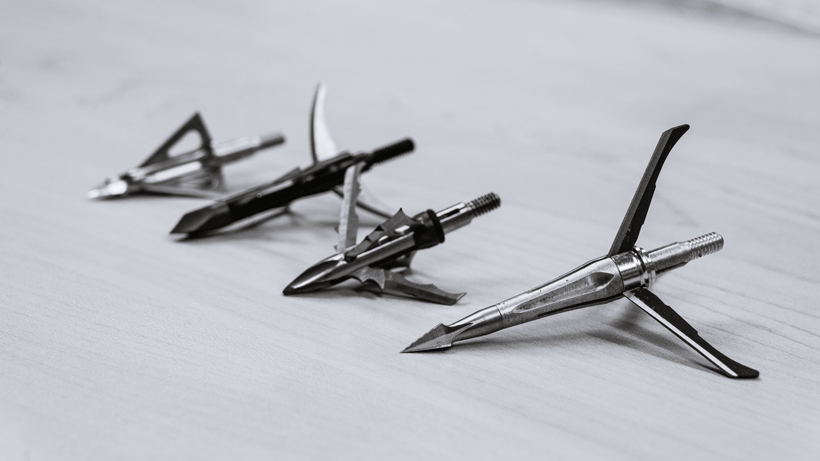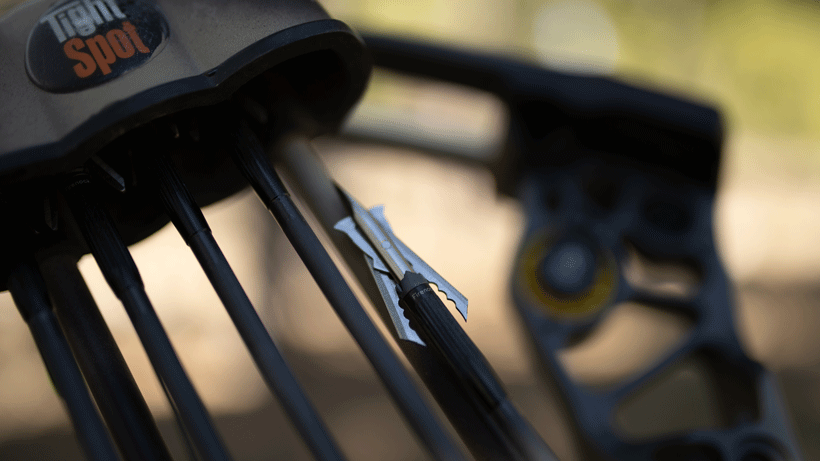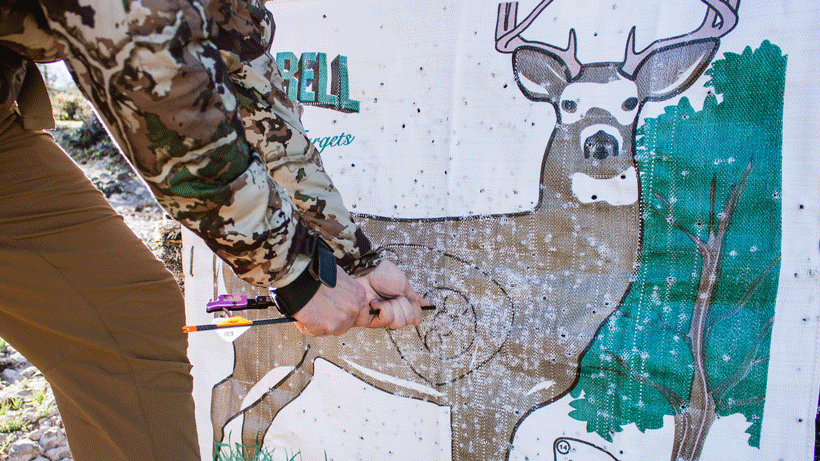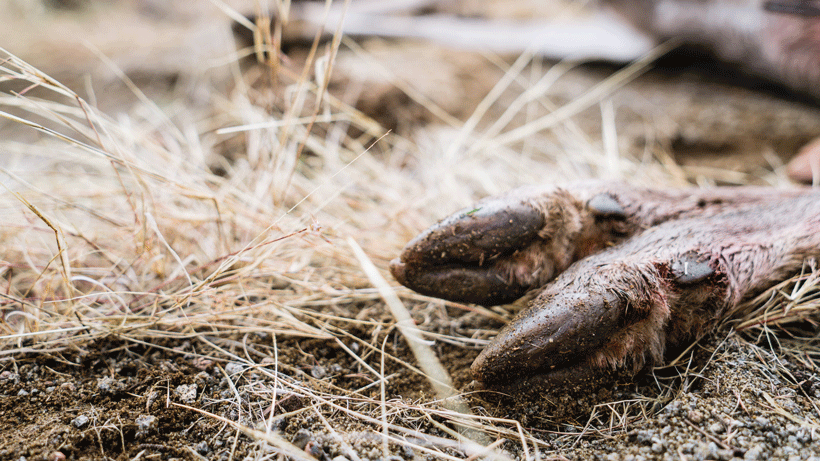







Photo credit: Brady J. Miller



I think it’s safe to say that mountain lions are our most lethal and efficient predator as far as large land mammals in North America go. They are more stealthy than any of us will ever be and extremely patient and calculated in their attempts to bring down game. Their excellent eyesight and sense of smell make them the masters of locating game. Once they do, it is their quiet paw pads and painstaking stealthiness that will get them in pouncing distance of the prey they seek. And, finally, the razor-sharp claws, jaws and overall strength of the cat is no match for the animal that it chooses to take down. These are all tools of that a mountain lion has to use—much like the tools that we use as bowhunters to bring down our own game. However, instead of using tooth and claw, we use an arrow and broadhead. How does a broadhead actually kill, though? What are the mortality factors behind a broadhead?
This is fairly obvious, right? A broadhead that slices through the vitals of an animal is one that will kill that animal. That’s pretty simple to understand. A “cut” and dry explanation. Let’s look a bit deeper, though, into what is happening and how the broadhead is causing mortality.
The first thing that comes to mind is blood loss. Critters have blood flowing through their arteries and veins. If that blood ceases to exist, they will die. So, by running a broadhead through blood vessels, we are essentially opening the floodgates, if you will. The animal’s blood pressure will drop as a result of this and, in turn, that will cause oxygen to be cut off from the brain, resulting in death. The fancy terminology for this is hemorrhagic shock. In my opinion, this is not a method of kill that anyone should shoot for. I wouldn’t purposefully aim for the femoral artery; a quicker death will come from a hit to the vitals.
This is, by a landslide, the shots that you should be aiming for. Hitting an animal in the vitals (lungs or heart) will often bring them down in mere seconds, which is what we want as hunters—a quick and clean kill with as little suffering as possible. There is no waiting for them to bleed out by aiming for the vitals. By collapsing the lungs you are cutting off the flow of oxygenated blood to the brain. The result is that the animal loses consciousness and dies. Another surefire way for a quick and clean kill is to hit the heart. This will immediately stop blood flow to the brain, causing death.
In no way, shape or form am I advocating anyone try to shoot an animal in the liver or guts. It does happen from time to time, though, and the more we know about it, the better prepared we can be in the field. Nobody wants to hit something in the liver or guts. It is a longer death for the animal with a great deal of suffering along the way. The liver is essentially a filter. It filters blood that comes from the digestive tract. If the filter isn’t working, then the animal will die. However, you’ll wait at least six to eight hours if you hit an animal in the liver. Now, guts is/could be fatal as well, but not as quick as the liver. I’ve heard of animals still not dead after 48 hours with a gut shot. It isn’t a quick death, but a broadhead to the guts is going to kill the animal eventually. The animal will eventually go into septic shock and die from an infection. Again, this is not something to strive for and, if you do hit an animal in the guts, I’d be trying to figure out how to get another arrow in it if I were you.
We’ve already laid out how a broadhead kills, but I think it’s also important to mention how a bullet kills. Unlike a broadhead that kills from cutting through blood vessels, bullets kill by pure energy and impact. They cause an immense amount of shock on the vitals, which disrupts their functionality and causes massive tissue trauma. Bullets also crush bone upon impact. Animals hit with a bullet can also die from blood loss, but that is not the main purpose of a bullet.
Now that we’ve established how a broadhead kills, let’s look at what makes it kill. Let’s start at the top or should I say “tip.” There are many versions of broadhead tips out there, but the two main ones are cut on contact and chisel tip. The cut on contacts are going to start slicing right off of the bat without any interference but the animal’s hide and flesh. Sounds perfect, right? A one-way ticket right into the vitals and out the other side.
What happens when you hit bone, though? That’s where the chisel tip comes in for folks worried about such things. The chisel tips are designed to break bone. The tips are sharp, but they are shaped and work sort of like a wood splitter. Narrow at the tip, but then they widen as you get down to the ferrule. So, instead of a wood splitter, they are bone splitters.
We are so lucky these days to have such an incredible catalog of broadheads to choose from. There is a broadhead for everyone out there and you really have the freedom to mold your broadhead choice to your particular style of hunting. All of them are going to kill just as good if put in the right spot, which we’ll talk about later. How many blades a broadhead has does affect how it works going through an animal. For instance, a fixed four-blade has more cutting surface than a fixed two-blade. This is going to give you a wider wound channel, meaning a bigger hole and more of a blood trail. However, to contrast that, it might give you less penetration. There is just more for the broadhead to get caught on and it might experience more drag than the two-blade will. A mechanical will stomp all of these into the ground in terms of wound channel, but, because it does take some force to open the blades, it might lack in penetration, especially if it encounters bone. Everyone has their own experiences with these broadheads, but these are the most common scenarios that I’ve come across and heard of.
Photo credit: Brady J. Miller
There are broadheads with a cutting diameter all the way from 1” to 2 1/2". That’s a big wound channel! Does the cutting diameter have an influence on the mortality of a broadhead? In the heat of the moment, things can get western here and there. This is bound to lead to a few imperfect shots. Having a larger cutting diameter broadhead will not only help with that, but it’s just also going to leave a bigger hole in the animal. I’ve seen some pretty gruesome photos after huge cutting diameter broadheads pass through an animal. So, is having that bigger cutting diameter going to aid the broadhead in its effectiveness? On the surface, it might seem like it and I think it does in a perfect scenario. However, in my opinion, it really doesn’t. Of course, we want some sort of cutting diameter in our heads, but too much might actually hinder us in a way. Like I mentioned above, the bigger the cutting diameter, the more there is for the broadhead to get caught on in its journey through an animal. Having a smaller cutting diameter head will harness and focus that energy more in one particular spot when it hits. This should theoretically aid in penetration. There is simply less drag from the broadhead traveling. Cutting diameter aside, if you put one of these broadheads in the right spot, it’s going to do its job. That leads us to our next talking point.
I am sure that we have all heard the phrase “shot placement is everything” or “shot placement is key.” In response to that, it really is. If you don’t put the broadhead where it’s supposed to go, it isn’t going to work properly. These heads are designed to slice and dice their way through all manner of chest cavities. It is when we introduce imperfect situations when we see imperfection in broadhead performance. How each fares on the shoulder blade of an elk is going to be different. Some folks tout about single bevel style heads for this. Others might be more in the camp of not “planning for a mistake” and avoiding that front shoulder altogether. I’ve heard stories about mechanical heads simply bouncing off of a quartering away animal. Whichever the case, the main objective here is to put that broadhead in the vitals where it will do its job of severing blood vessels, arteries, deflating lungs and stopping hearts. It doesn’t matter if it’s a two-blade, three-blade or mechanical.
This all might seem excessive to think about and a lot of little things to consider; however, I believe that all of those little things add up in the end to something big: us becoming the most lethal version of ourselves with a bow. The more we are in tune with our bow, our style of hunting and the animals we are pursuing, the better off we are in the long run. Knowing this stuff lets us mold our equipment to our own wants and needs for hunts. Sure, we might not have super quiet paw pads, bone-crushing jaws or razor sharp claws like the most admirable mountain lion does, but we do have some pretty cool tools at our disposal. Understanding how those tools work, like a broadhead, is going to inevitably help us “close more deals” in the field.